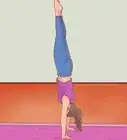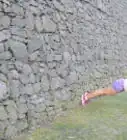X
wikiHow is a “wiki,” similar to Wikipedia, which means that many of our articles are co-written by multiple authors. To create this article, 11 people, some anonymous, worked to edit and improve it over time.
This article has been viewed 38,236 times.
Learn more...
Whether you are a gymnastics coach or a parent helping children follow in your footsteps, teaching a youngster how to do a handstand can be quite a challenge! This article will let you know what to watch for and what to avoid.
Steps
Part 1
Part 1 of 3:
Setting up
-
1Find a safe place to learn. Clear the area of any sharp or hard objects that might cause an injury if the child falls on them. Choose a spot with plenty of room to move around.[1]
- Grass, gym mats or a mattress on the ground are good ground surfaces.
-
2Set up suitable equipment to help make the learning easier. For example, be near a wall, or use a chair or sofa. For softness, include a gym or yoga mat.[2]
Advertisement
Part 2
Part 2 of 3:
Warming up
-
1Have the child warm up. Have fun with this. Make up games that will keep the child full of energy.[3]
-
2Have a wheelbarrow race. It might seem crazy but it will get them the hang of being upside down. (If you don't know, a wheelbarrow race involves one person "walking" with their hands on the ground, and a second person walking or running behind the first person while holding that person's legs off the ground.)
-
3Explain to the child how to avoid injury while doing a handstand. Show them how to roll while falling.
Advertisement
Part 3
Part 3 of 3:
Practicing the handstands
-
1Stand near a wall or sofa chair. Have the child practice kicking up into the air and resting against the wall. Then help the child with the landing. Spot the child at all times and help to hold the child in position while he or she gets the feel for the handstand.[4]
-
2Go away from a wall when the child feels more confident. Continue to spot them as they kick (holding up as needed), then help them to land again. Repeat as often as needed but ensure that the child has breaks to avoid getting dizzy or tired.[5]
-
3Keep practicing this daily. Eventually the child will get the hang of it, in their own time.
- This takes time.
-
4Offer a reward for improvement and success. It'll take time, so be patient.
Advertisement
Community Q&A
-
QuestionWhat if my child is scared, but really wants to learn?
 Community AnswerYou can guide your child up into a handstand several times to get them used to how it feels. Just hold onto their ankles to keep them from falling. Once your child gets used to the feeling of it, you can start letting go for longer and longer amounts of time.
Community AnswerYou can guide your child up into a handstand several times to get them used to how it feels. Just hold onto their ankles to keep them from falling. Once your child gets used to the feeling of it, you can start letting go for longer and longer amounts of time. -
QuestionHow can I do it without using a wall and help?
 Community AnswerPut your hands on the ground and start pushing and shooting your legs into the air until you get used to having your feet above your head. Then start putting more balance into it, and before you now it, you can do a handstand. After that, learn a cartwheel, then a one handed cartwheel, a side flip, a backflip, a frontflip, etc. Build up.
Community AnswerPut your hands on the ground and start pushing and shooting your legs into the air until you get used to having your feet above your head. Then start putting more balance into it, and before you now it, you can do a handstand. After that, learn a cartwheel, then a one handed cartwheel, a side flip, a backflip, a frontflip, etc. Build up. -
QuestionI'm a child. I can't go outside, I don't have a gym mat and we don't have an extra mattress. What other surfaces can I use?
 Community AnswerThe next safest surface would be a room with carpeted flooring. That way if you fall it won't hurt as much. Place pillows around you to soften any falls.
Community AnswerThe next safest surface would be a room with carpeted flooring. That way if you fall it won't hurt as much. Place pillows around you to soften any falls.
Advertisement
References
About This Article
Advertisement



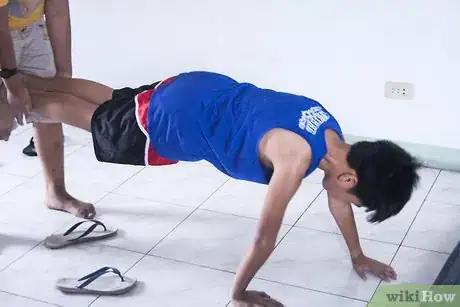

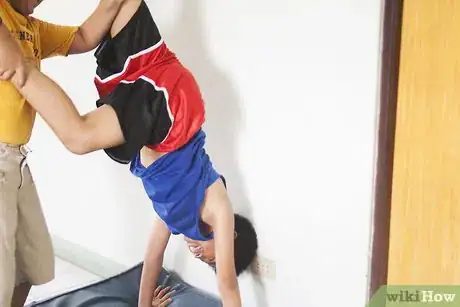




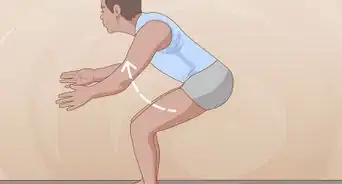




-Step-6-Version-4.webp)







